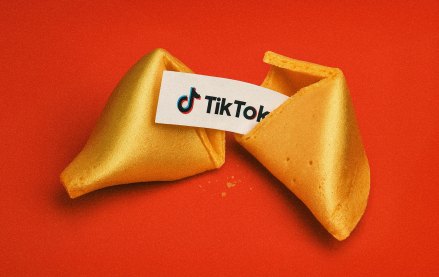Save 50% on a 3-month Digiday+ membership. Ends Dec 5.
Brands and retailers are driving engagement with hyper-local, multi-touch strategies

Erin McCallion, Chief Marketing Officer, Perion
In this fiercely competitive retail market, capturing consumer attention and converting it into sales requires more than traditional advertising. Brands must innovate relentlessly to stay relevant.
Hyper-local, multi-touch and performance-driven advertising strategies are the heart of much of this innovation. These strategies harness first-party data, dynamic and personalized creative, contextual relevance and AI algorithms to improve performance at every step of the campaign. These tools aren’t just reshaping advertising — they’re redefining personalized consumer engagement and driving measurable results for major global brands.
First-party data powers sophisticated campaigns that drive results
First-party data is among brands’ and retailers’ most valuable assets. This data — collected through e-commerce interactions, loyalty programs and direct consumer engagements — unlocks deep insights into consumer behavior. However, its value is more effectively realized when advanced AI technologies transform raw data into actionable intelligence.
By integrating advanced CTV, audio and digital out-of-home (DOOH) solutions, brands can leverage precise geolocations and real-time analytics to drive foot traffic into physical stores. These campaigns maximize impact and provide measurable sales uplift by delivering messages at the right time and place.
How Dior leveraged contextual intelligence for precise timing and targeting
Knowing an audience is only half the mission; for marketers, the real challenge — and opportunity — lies in understanding when and where to engage them. Contextual intelligence enables retailers to optimize ad placements based on real-time environmental triggers such as location, weather conditions and consumer proximity to a store.
For example, Dior used Perion technology for its recent campaign for its Sauvage fragrance in Australia. By leveraging the power of programmatic OOH to target peak commuting times and high-traffic weekends in strategic locations, Dior significantly boosted awareness and engagement ahead of Father’s Day, a critical sales period.
The campaign’s precise use of large-format advanced digital billboards in high-impact areas of New South Wales and Victoria, combined with partnerships with major media companies, allowed Dior to connect effectively with its target demographic. In two weeks, it generated more than 2.7 million impressions, delivering a 38% recall rate, a 10% increase in brand familiarity and a 6% boost in brand consideration among those who recalled the campaign.
This approach demonstrates how aligning ad content with the right context — including who the audience is, as well as when and where they can be reached — transforms ads from simple notifications into powerful drivers of consumer behavior and brand loyalty.
How Sony Electronics activated engagement at scale with dynamic creative
In an era where personalization is paramount, AI-driven dynamic creative solutions empower brands to adapt content to audience interests across multiple screens, channels and formats. Sony Electronics’ NFL campaign on YouTube demonstrated this potential by blending high-impact creative with contextual relevance.
The campaign leveraged a high-impact, non-skippable video format in YouTube’s video-only environment, maximizing viewer engagement. It achieved an impressive 98% video completion rate (VCR), far surpassing the industry benchmark of 90%, and reached more than 11 million unique users.
Sony Electronics strategically targeted sports-centric channels, including NFL, ESPN, Bleacher Report and House of Highlights, to enhance visibility and deepen viewer engagement. The campaign’s success underscores the power of innovative ad formats and AI-driven personalization in delivering high-impact advertising experiences.
Linking ads to sales, both online and in-store, is essential
Building on the foundation of dynamic creativity, it’s critical for brands to measure the tangible impact of advertising efforts. AI-enhanced attribution models play a pivotal role here, providing a clear view of how ad exposures contribute to both in-store and online sales.
Despite the digital surge, physical stores remain a cornerstone of the retail landscape. For example, online grocery shopping still accounts for just 13% of total sales. This underscores the critical role of digital campaigns in driving in-store traffic, particularly for retailers operating in ecosystems dominated by large physical networks.
To be effective, advertising strategies must strike a balance, engaging consumers online while also driving them into physical retail environments. By leveraging both realms, brands and retailers can enhance customer experiences and boost overall sales.
By analyzing campaign data, brands and retailers can fine-tune their strategies to maximize ROI. This data-driven approach helps brands optimize ad spend, refine targeting techniques and ensure their efforts translate into real business outcomes.
Navigating the future with data, context and creativity
Looking ahead, the future of brand and retail advertising hinges on mastering the interplay between data, context and creativity. By harnessing these elements, brands and retailers can ensure that their messaging resonates with the right audience at the right moment, turning potential interest into actual sales.
The integration of sophisticated analytics, contextual advertising and creative personalization isn’t just about capturing attention — it’s about fostering meaningful consumer engagements that drive measurable business outcomes. As advertising and retail continue to evolve, embracing these strategies will be essential for brands to stay competitive and achieve sustained growth.
Sponsored by Perion
More from Digiday

The Trade Desk loosens its grip on pricing amid buyer pressure
Amid fierce DSP competition, media agencies are finding The Trade Desk’s reps in a negotiating mood.

Behind the rise of the chief productivity officer and what it means for companies and employees
The CPO is envisioned as the leader who orchestrates people and technology together to drive business outcomes.

TikTok Shop sheds bargain-bin reputation as average prices climb across categories
An analysis by e-commerce intelligence firm Charm shows average prices climbing across more than a dozen key categories.








